[派瑞林日记]Are Parylene Noodles a Defect
Are Parylene Noodles a Defect
Unlike liquid conformal coatings joined to substrate surfaces by wet application methods, polymeric parylene (XY) uses a unique chemical vapor deposition (CVD) process to assure adherence. There is no intermediate liquid phase. Rather, cross-link polymerization of powdered raw XY-dimer converts the solid to a vapor at the molecular level, polymerizing XY directly as a transparent film on assembly surfaces.
Applied in a gaseous state, XY penetrates deep within substrate surfaces, providing an authentically conformal protective covering. In many ways, parylene coatings are superior to those provided by wet materials like acrylic, epoxy, silicone or urethane, for a wider variety of products and purposes. Micro-thin film performance makes parylene especially useful for coating printed circuit boards (PCBs) and in microelectromechanical systems (MEMs)/nano technologies.
The XY deposition process assures neither heat nor cooling is needed for coating adherence. The circuit board neither expands nor shrinks, reducing coating-stress. Depositing XY as a dry vapor helps the coated items endure minimal changes during the application process, eliminating another major risk factor of coating defect.
Polymeric Noodles
As a polymer, parylene begins as a monomer-based linear chain fused covalently. The ongoing chain entanglements characterizing parylene morphology stimulate a degree of viscoelastic behavior. Viewed microscopically under normal conditions, they resemble noodles, sometimes elongated but neither precisely straight nor clustered together; often compared to a bundle of spaghetti noodles, they are held together by a few chemical cross-links. More precisely,
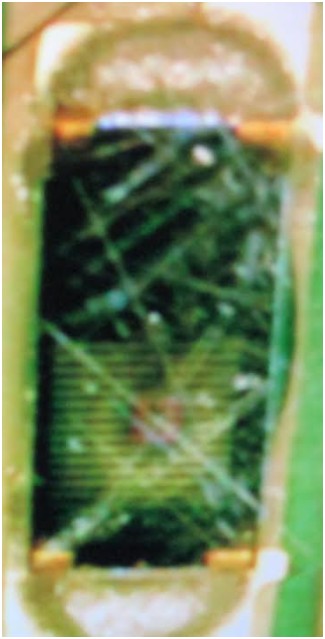
· the shape of a Gaussian coil develops,
· collected as parylene (or other polymer) molecules join,
· ranging from several nanometers to several tens-of-nanometers in length,
· measured by the root-mean-square end-to-end distance Ree,
· scaled as the square root of the coil‘s total number of monomers (N) or molecular weight (Mw).
In this basic form, which encompasses parylene morphology, noodles are NOT a defect, but a normal and characteristic part of the polymer’s physical structure. Increasing their density across the strands provides shape and strength, limiting their ability to pull away from each other, while increasing their functional and load-bearing uses. These capacities help XY polymers achieve architectural/performance networks necessary for conformal coating purposes.
Defective Noodling
Despite its general superiority as a conformal coating, parylene application and use can suffer defects. While common XY defects can often be identified, planned for and mitigated through proper procedures, they still occur. Inadequate application or deposition onto a surface unprepared for adhesion can compromise XY function.
Defective noodling is the result of deformation mechanisms developing on the surfaces and interfaces of parylene coated systems. These factors can cause loss of the parylene film’s surface pattern-effectiveness, disrupting the structural integrity of the coating’s typically reliable noodle-like entanglement. The surface is then characterized by highly disordered structural configuration, resembling a plate of noodles winding chaotically around each other, interfering with parylene’s usual uniform, pinhole-free surfaces. Disruption of the coating’s performance integrity can lead to both current leakage and voltage breakdown.
If inappropriately cleaned before application, or inadequately deposited, liquids or other substances can penetrate both at the parylene-substrate interface and through the polymer layer, stimulating an environment of disrupted noodle development. Film instabilities can also occur on parylene surfaces when temperatures exceed the polymer’s standard glass transition temperatures (Tg). Basic outcomes include sequential disruption of hierarchical coating formation, a condition that can be generated despite the protection usually afforded by XY’s reliable CVD application method. Poor adhesion and residual stress can also lead to bending, cracking, peeling and noodling of parylene conformal films.
Parylene conformal coating defects can be caused by a range of factors. However,
· cleanliness of the product surface,
· carefully matching the parylene type to the coating assignment/purpose, and
· expert performance of the CVD process
· mitigate the potential for these problems to arise.
Undetected trace contaminants disrupt the bond between parylene film and underlying surfaces, leading to disruption of noodle configuration.
Thus, noodles, a basic element of parylene morphology, can themselves be transformed from a tasty dish of conformal coating to one that may need to be scrapped or redone.
· Conventional, non-defective parylene noodles resemble a properly cooked and stirred pot of spaghetti, with a bit of olive oil stirred in, to keep them from only adhering to each other.
· Rather, they adhere to the substrate. This recipe can be delicious!!
· When defects occur, the noodles resemble a tangled mat of unstirred, cooked spaghetti, assuming a random shape, of little use to the conformal coating project.
Not always immediately apparent, disordered adhesion will eventually compromise the coating and, ultimately, the end-product, thus neutralizing parylene’s protective benefits. As an integral structural XY-component, you can’t avoid the presence of parylene noodles, but you can control them.
译 文
与通过湿涂法连接到基材表面的液体保形涂料不同,聚合物聚对二甲苯(XY)使用独特的化学气相沉积(CVD)工艺来确保粘附。没有中间液相。相反, 粉末状原始XY-二聚体的交联聚合 将固体转化为分子水平的蒸气,直接聚合XY作为组装表面上的透明膜。
XY以气态涂覆,深入渗透到基板表面内,提供真正保形的保护层。在许多方面,对于更广泛的产品和用途,聚对二甲苯涂层优于由诸如丙烯酸,环氧树脂,硅树脂或聚氨酯的湿材料提供的涂层。微薄膜性能使聚对二甲苯特别适用于涂覆印刷电路板(PCB)和微机电系统(MEM)/纳米技术。
该 XY沉积 过程保证既没有热量也不需要用于涂覆粘附冷却。电路板既不会膨胀也不会收缩,从而降低涂层应力。将XY作为干蒸汽沉积有助于涂层物品在施加过程中承受最小的变化,消除了涂层缺陷的另一个主要风险因素。
聚合面条
作为聚合物,聚对二甲苯以共价稠合的基于单体的直链开始。 表征聚对二甲苯形态的正在进行的链 缠结刺激了一定程度的粘弹性行为。在正常条件下用显微镜观察,它们类似于面条,有时是细长的,但既不是直的也不是聚集在一起; 通常 与一捆意大利面条相比,它们通过一些化学交联连接在一起。 更确切地说,

· 高斯线圈的形状发展,
· 聚对二甲苯(或其他聚合物)分子加入时,
· 长度从几纳米到几十纳米,
· 通过均方根端到端距离Ree测量,
· 按比例计算线圈的单体总数(N)或分子量(Mw)的平方根。
在这种包含聚对二甲苯形态的基本形式中,面条 不是 缺陷,而是聚合物物理结构的正常和特征部分。增加它们在股线上的密度提供了形状和强度,限制了它们彼此拉开的能力,同时增加了它们的功能和承载用途。这些能力有助于XY聚合物实现保形涂层所需的建筑/性能网络。
Noodling瑕疵
尽管其作为保形涂层具有普遍的优越性,但聚对二甲苯的应用和使用可能存在缺陷。虽然常见的XY缺陷通常可以通过适当的程序进行识别,规划和减轻,但它们仍然会发生。 施加不充分或沉积在未经附着的表面上 会损害XY功能。
有缺陷的涂层是聚对二甲苯涂层体系表面和界面上形成的变形机制的结果。这些因素可能导致聚对二甲苯薄膜表面图案效果的损失,破坏涂层的结构完整性,通常是可靠的 面条状缠结。然后,表面的特征在于高度无序的结构构型,类似于一张彼此缠绕的面条盘,干扰了聚对二甲苯通常均匀,无针孔的表面。涂层性能完整性的中断 可能导致电流泄漏和电压击穿。
如果在施用前不适当地清洁,或者沉积不充分,液体或其他物质可以在聚对二甲苯 - 基底界面和聚合物层中渗透 ,从而刺激面条发育中断的环境。当温度超过聚合物的标准玻璃化转变温度(Tg)时,聚对二甲苯表面也会发生膜不稳定性。基本结果包括分层涂层形成的连续破坏,尽管通常由XY可靠的CVD应用方法提供保护,但仍可产生这种情况。粘附性和残余应力差也会导致 聚对二甲苯保形膜的弯曲,开裂,剥落和涂覆。
聚对二甲苯保形涂层缺陷可由一系列因素引起。然而,
· 产品表面清洁,
· 仔细匹配聚对二甲苯类型与涂层分配/目的,
· CVD工艺的专家表现
· 减少出现这些问题的可能性。
未检测到的痕量污染物破坏了聚对二甲苯薄膜和下面的表面之间的结合,导致面条配置的破坏。
因此,作为聚对二甲苯形态的基本元素的面条 本身可以从保形涂层的美味菜肴转变为可能需要报废或重做的面条。
· 传统的,无缺陷的聚对二甲苯面条类似于正常煮熟和搅拌的意大利面条锅,搅拌着一点橄榄油,以防止它们仅相互粘附。
· 相反,它们粘附在基材上。这个食谱可以很好吃!!
· 当出现缺陷时,面条类似于未经过搅拌的意大利面条的缠结垫,呈现随机形状,对保形涂层项目几乎没有用处。
并非总能立即显现,无序粘合最终会损害涂层,最终影响最终产品,从而中和聚对二甲苯的保护效果。作为一个完整的结构XY组件,你无法避免parylene面条的存在,但你可以控制它们。
更多纳米防水资讯请关注纳米防水微信号: nanowp
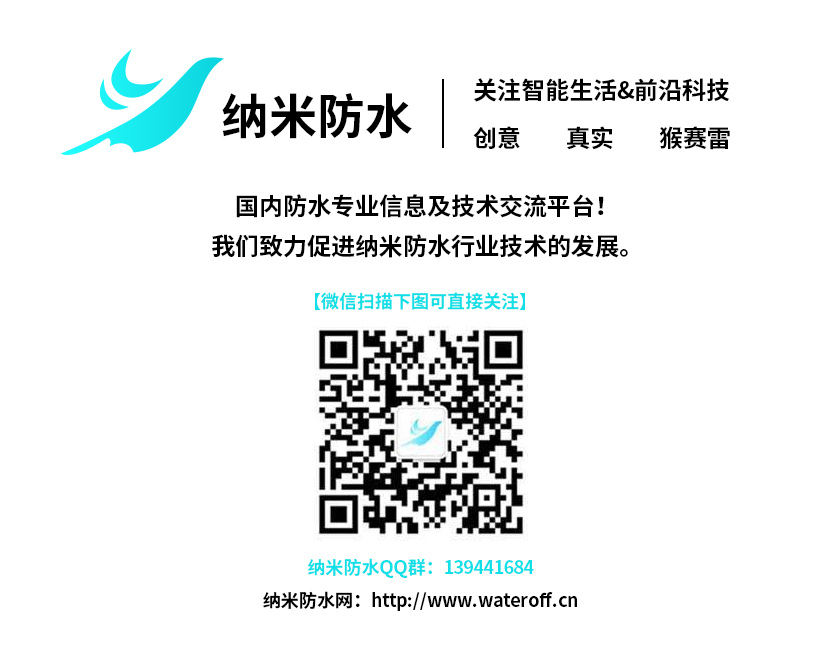
随着电子产品防水需求的不断提高,从原先的 IP54到现在的IP67IP68等级!市场上出现了防水透气膜和防水透音膜,目前这两种不同的材料应用被搞混了,今天便与大家一起讨论防水透气
最近各地降雨量激增,所以手机就难免会沾点水,作为生活中不可或缺的电子产品,防水已经成为一个十分重要重要功能,而且个人对目前的IP68手机市场是相当不满意的。为什么?太贵
自然界中荷叶具有出淤泥而不染的典型不沾水特性(学术上称为Cassie-Baxter状态),具有自清洁、抗结冰、减阻、抗腐蚀等广泛应用价值,而玫瑰花瓣则具有水滴高粘附特性(称为Wenze
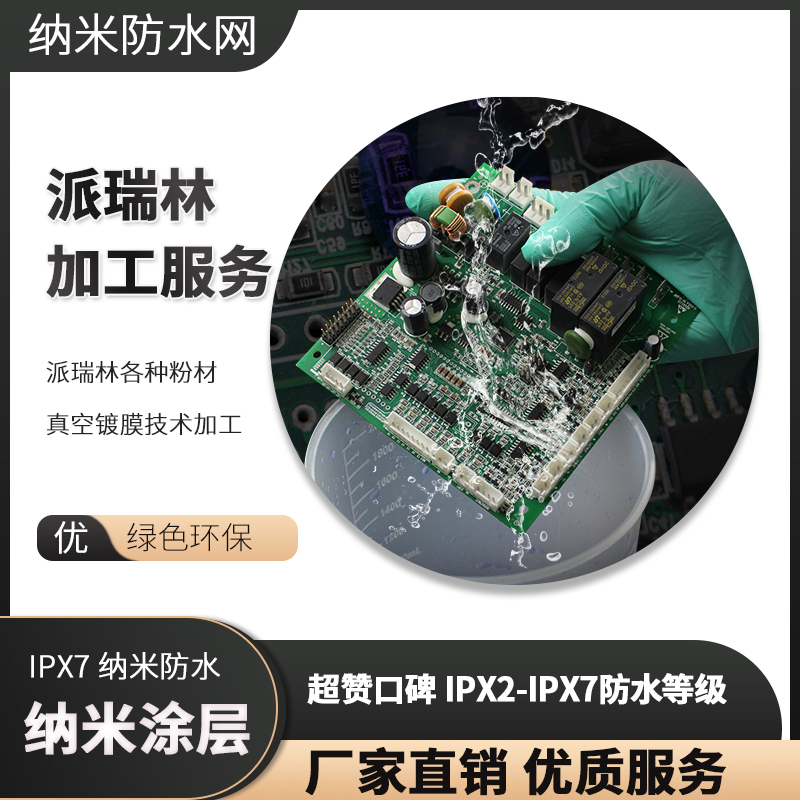
派瑞林各种粉材真空镀膜技术加工 纳米涂层防水处理
派瑞林各种粉材真空镀膜技术加工 纳米涂层防水处理
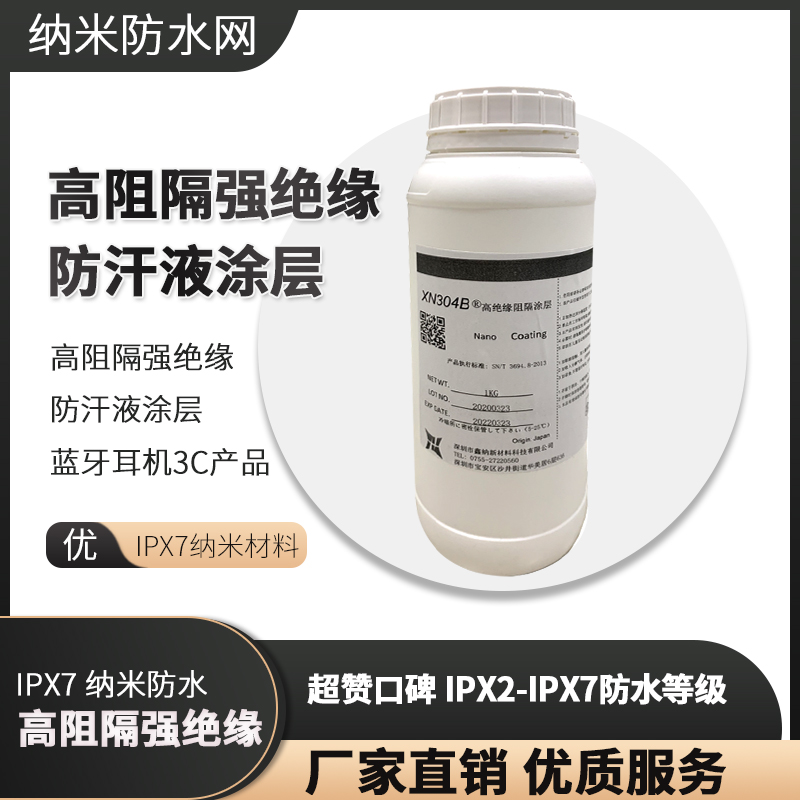
高阻隔强绝缘防汗液涂层蓝牙耳机3C电子产品IPX7纳米材料
高阻隔强绝缘防汗液涂层蓝牙耳机3C电子产品IPX7纳米材料
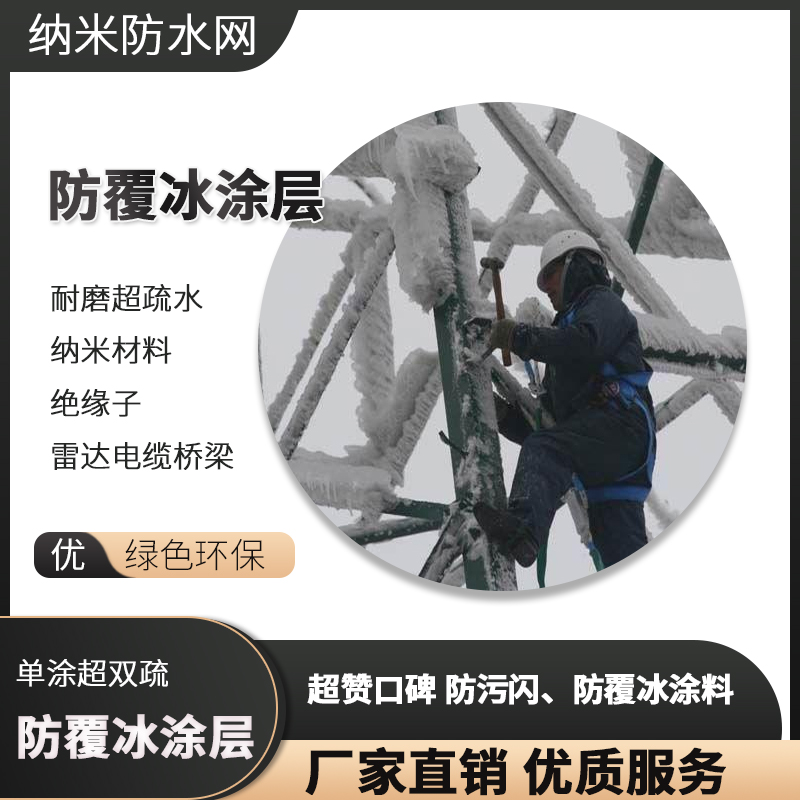
耐磨超疏水纳米材料 绝缘子架空导线电缆桥梁防覆冰涂层
耐磨超疏水纳米材料 绝缘子架空导线电缆桥梁防覆冰涂层
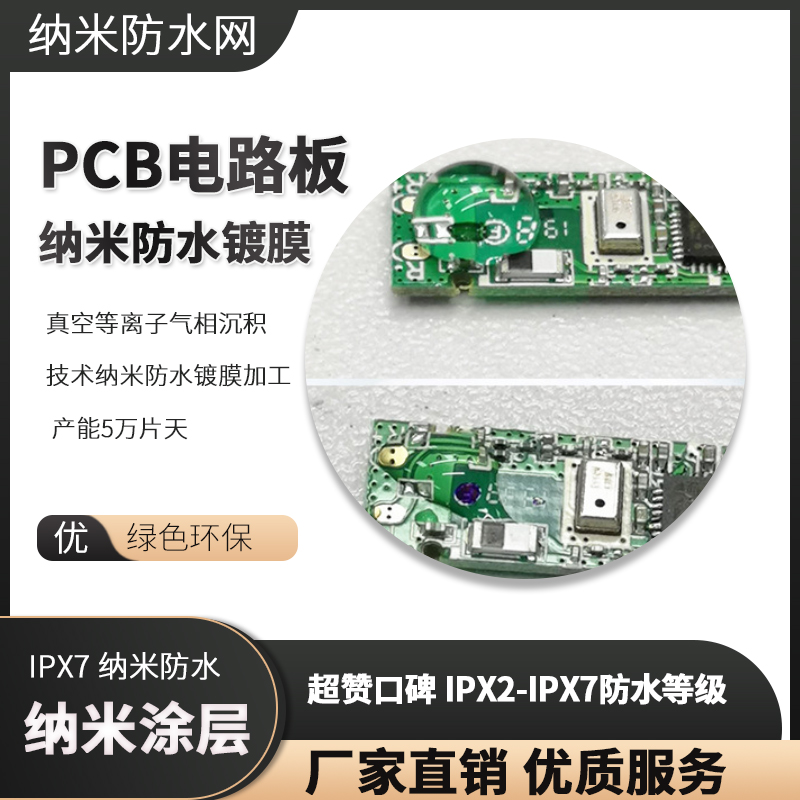
真空等离子气相沉积技术纳米防水镀膜加工 产能5万片天
真空等离子气相沉积技术纳米防水镀膜加工 产能5万片天
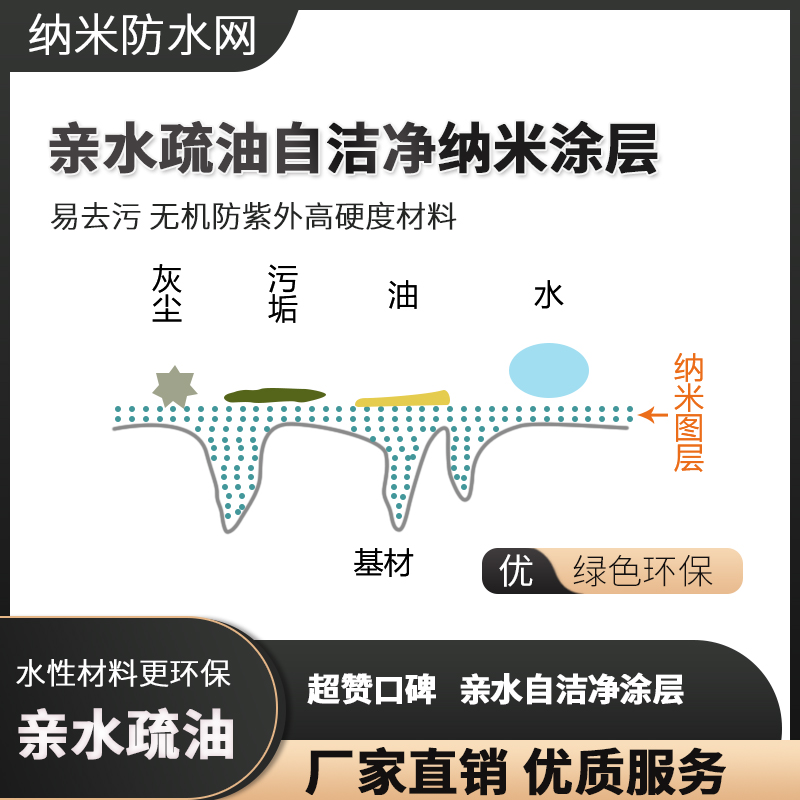
亲水疏油自洁净纳米涂层 易去污 无机防紫外高硬度材料
亲水疏油自洁净纳米涂层 易去污 无机防紫外高硬度材料
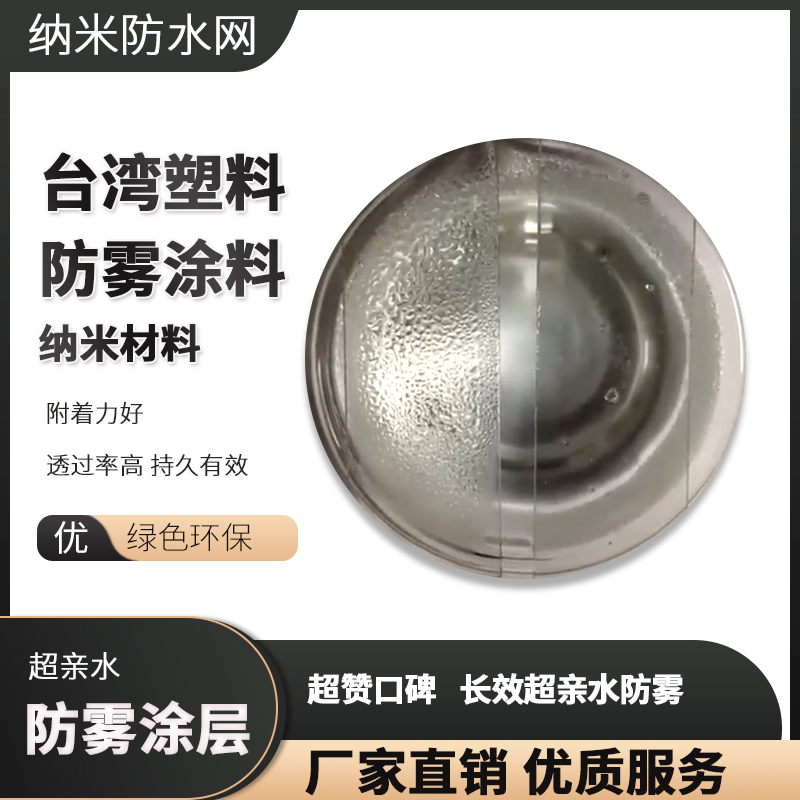
台湾超亲水防雾塑料专用 附着力好 透过率高 持久有效
台湾超亲水防雾塑料专用 附着力好 透过率高 持久有效


